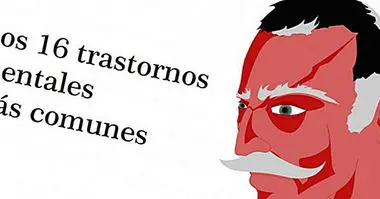Rational Emotive Behavior Therapy (TREC) by Albert Ellis
Albert Ellis (1913 - 2007) was one of the most influential psychologists of the 20th century and one of the most outstanding figures in the field of psychology after his break with the psychodynamic school.
He was the creator in one of the theories that have revolutionized the foundations and the methodology in the treatment of emotional and psychological problems, he has earned a place of honor among the greatest psychologists. We speak today of Albert Ellis and the TREC .
Albert Ellis and Rational Emotive Behavior Therapy (TREC)
Your theory (the Rational Emotive Behavioral Therapy ) is well known and although many psychologists do not share its principles, others are instead incorporated into this line, finding in it a good basis to continue developing their profession and the appropriate treatment for each disorder, according to the current requirements in the field of clinical psychology.
Albert Ellis was born in Pittsburg in 1913 and studied at the University of Columbia (New York), specializing in training professionals in Psychoanalysis. There he obtained his doctorate in 1947. Ellis soon realized the limitations of Sigmund Freud's theory and, disappointed by the few results he obtained with his patients, he gradually abandoned psychoanalytic theory to start working on his own theory. .
Already by the year 1953 he breaks completely with psychoanalysis and begins to develop a type of psychotherapy that he would call Rational Emotive Therapy, a type of counseling psychotherapy cognitive-behavioral .
The TREC: what is it?
But, What is Emotional Rational Therapy? It is known that Ellis received training in the field of letters. Among his studies had much to do with philosophy, which would serve as a primordial basis for the further development of his theory. Ellis considered that his theory could be summed up in the phrase of the famous Stoic Greek philosopher Epíteto, which affirmed that "People are not disturbed by the facts, but by what they think about the facts"
Ellis developed his theory by exemplifying it as shown in this graphic :

Albert Ellis considered that behavioral and emotional problems they could have their genesis from their three sources: thought, emotional and behavioral . He emphasized how thoughts affect psychological alterations.
Ellis (1995) stated that people are largely responsible for their disturbed feelings, which are generated either consciously or unconsciously. Therefore, those same people have all the resources to be able to modify their thoughts and bring to their lives lasting and stable states.
The link between thought and emotion
According to Ellis, this shows how thought and emotion are related. Ellis said that what causes the alteration or emotional difficulty is not what happens at point A, but that people create a belief structure at point B and reinforce these beliefs in a negative and often harmful way, which is manifests in behavioral or emotional reactions: point C, according to Ellis (1962).
This theoretical body and the therapy that emerged from it motivated many criticisms by some professionals in the field of psychiatry and psychology itself, by claiming that it sinned from an excess of "rationalism" that caused the theory to be perceived as not very viable and unscientific, however, the time led to numerous studies and investigations on cases where has applied the TREC, obtaining a high reliability and excellent results.That is why the TREC, since it was created by Albert Ellis to the present is at the forefront of psychotherapies.
The studies that Ellis developed throughout his life had their fruits. Currently, at his institute located in the city of New York is still working in the training of psychotherapists, through talks, care for people with family problems, personal, and with studies that make day after day the science of psychology develop new tools for a century as demanding as the one we live.
Rational Emotive Behavioral Therapy has a clear purpose, as stated by Saranson (2006) in his book Abnormal psychopathology, the problem of maladaptive behavior , where it refers to Ellis and Dryden (1977): people have to question their fundamental beliefs (in most cases, irrational), and then replace them with more constructive (rational) ones.
The REBT has not only been applied in the clinical field but there are several writings on the intervention in the labor and educational fields.A psychotherapy that provides many opportunities in the study of the human being, emotions, thought and mental health.
Bibliographic references:
- Caballo, V. (2010), Technique manual and behavior modification
- Ellis, A. (2003), Manual of Rational Emotive Therapy, Editorial Desclee
- Saranson, B. and Saranson, I. (2006), Abnormal Psychopathology, the problem of inadverted behavior, Editorial Pearson




















